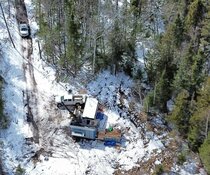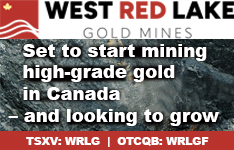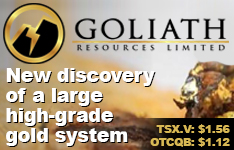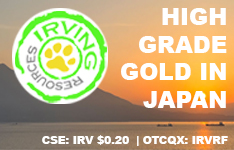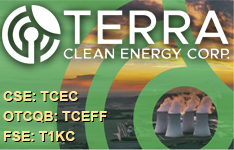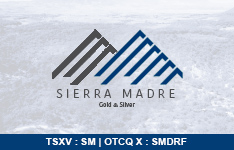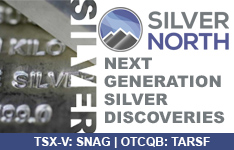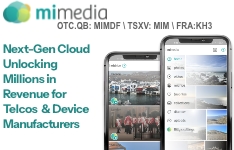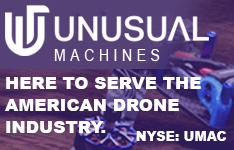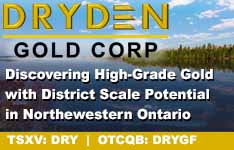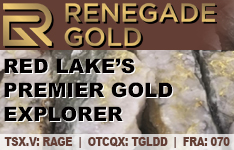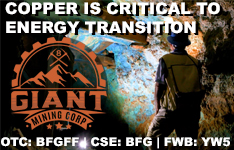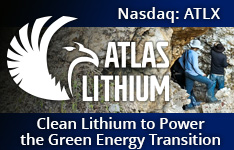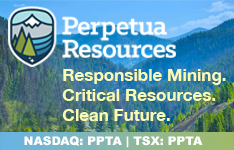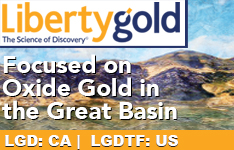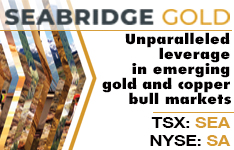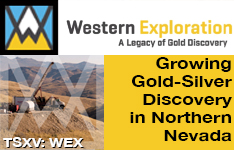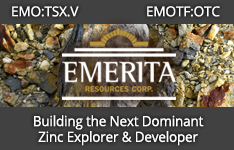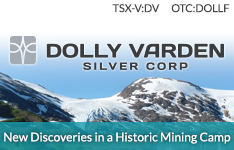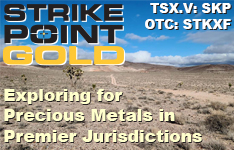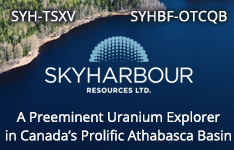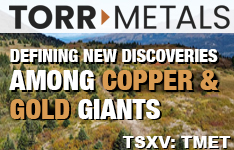In the June 11 episode of Doug Casey's Experts Roundtable, Co-Founder and Director Mario Vetro and Vice President Exploration Blake Mclaughlin from Axcap Ventures Inc. (AXCP:CSE) shared their distinctive approach to acquiring and developing undervalued gold properties.
Axcap explained their strategy of securing projects at low prices, enhancing their worth, and implementing robust marketing efforts to boost stock liquidity and overall value.
The dialogue explored the specifics of their key projects, such as Converse in Nevada and Rattlesnake Hills in Wyoming, while addressing the obstacles present in the current gold market. Despite skepticism from some experts on the panel regarding the long-term sustainability of these marginal projects, both Doug Casey and host Matt Smith of Crisis Investment said they recognize the potential for short-term profits and the innovative nature of the company's business model.
As Smith and Casey note on the page posting the video, "Companies compensate to be featured on Doug Casey's Experts Roundtable, but the inquiries are genuine, and the responses are candid."
Junior Mining Ecosystem Broken?
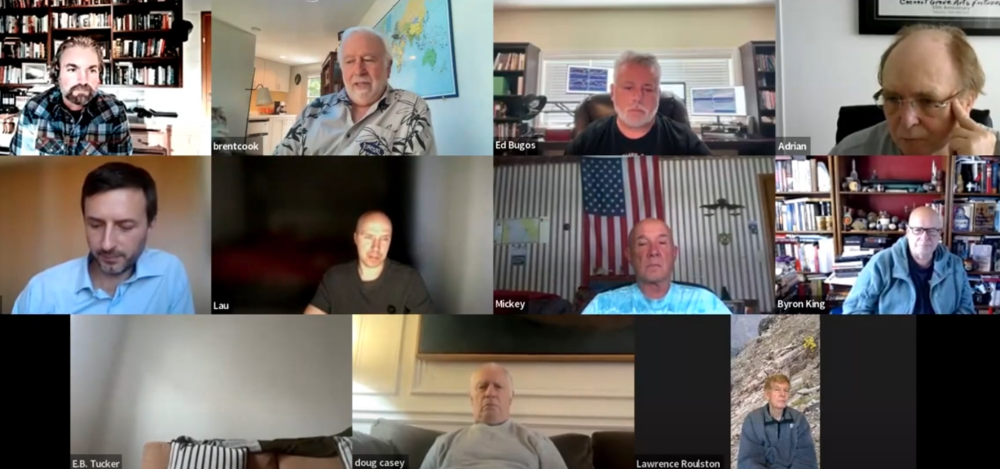 Vetro is no stranger to finding gold, having cofounded K92 Mining, which operates the high-grade and producing Kainantu Gold Mine in Papua New Guinea.
Vetro is no stranger to finding gold, having cofounded K92 Mining, which operates the high-grade and producing Kainantu Gold Mine in Papua New Guinea.
Axcap is essentially "a response to the broken ecosystem of junior mining," Vetro told the panel.
"I got sick of seeing these great projects that had great teams that had a great track record , , , and all the bankers wanted to do was call the hedge funds," he said. "I wanted to custom-build a company that was set up for the reality of our current market."
They purposefully created a bigger share structure for liquidity. "If you're always liquid, you can always finance," Vetro said. "If you can always finance, you can always do the main thing that adds value to a junior, which is drilling."
He continued, "The big problem in the sector over the last 10-15 years has been most of the companies that in it are doing financings to keep the lights on. When you're doing that, you're not really drilling for growth."
Axcap said it plans to buy gold deposits at less than US$5 per ounce to drill and expand them in Phase 1 and monetize them in Phase 2. It has already acquired deposits with more than CA$80 million in historical spending and has accrued about 8 million ounces gold (Moz Au) of resources.
It said it intends to acquire only U.S. and Canadian assets in mining-friendly jurisdictions, secure ownership, and access to labor and infrastructure.
'Tons of Opportunity' in the Market
Converse and its 5.99 Moz Au resource are in the Battle Mountain trend, the company said. Past production exceeded 50 Moz Au. It is permitted for exploration and has no known impediments to open-pit operations, Axcap said.
Possible upcoming catalysts for the company include results expected in several weeks from its ongoing 5,500 meters of drilling at Converse.
Vice President of Exploration, Blake Mclaughlin, told the group the company sees "tons of opportunity" in the market, where orphaned and undervalued assets are sitting as non-core projects within companies that are looking for non-dilutive ways to raise money."
Vetro and Mclaughlin said the value of the company can be expanded by more than just the drill results.
"We are trading at US$5 per ounce in the ground (as of June 11), our peers are trading at US$50-plus," Vetro said. "We should be trading in line with the peers, and I think we should be getting a premium. We are in a Tier One jurisdiction, we have a deposit that does not have any fatal issues, and we now have a very pro-mining environment in the United States."
With gold going higher, M&A is picking up, he said, and top-tier jurisdictions are going to be the first to get majors and mid-tiers buying.
"Gold goes to US$4,000, US$4,500, US$5,000, and majors really start to feel the pinch to buy and accumulate quality ounces in Tier One jurisdictions," Vetro said. "If we can sell Converse, for example, for US$40 per ounce to a mid-tier or a major, that's significant."
A 'Land Grab' as the Banks Come Back
Brien Lundin of Gold Newsletter noted that the business model focused on "racing to get assets" and not on being an investment that would last years.
"It was very much a land grab," Vetro said of going after the undervalued properties. "The bankers are coming back and strength flow back into the sector. We wanted to be in front of that."
In response to a question about stock price appreciation, Vetro mentioned that subsidiaries with successful projects also can be spun out into their entities. The continually percolating gold bull market adds to the excitement as M&A heats up.
The price of gold decreased by 2%, reaching a low not seen in over two weeks on Tuesday following the announcement of a ceasefire between Iran and Israel, which reduced the demand for safe-haven assets like bullion, reported Sarah Qureshi for Reuters.
As of 10:06 a.m. EDT, spot gold dropped by 1.9% to US$3,303.93 per ounce, marking its lowest point since June 11 earlier in the trading session. Concurrently, U.S. gold futures fell by 2.2%, settling at US$3,318.90.
"The relaxation of tensions in the Middle East is the key element that's impacting gold negatively. The need for safe-haven assets has lessened, and the market appears to embrace more risk," commented Peter Grant, vice president and senior metals strategist at Zanier Metals, Qureshi reported.
But experts believe that the existing bull market for gold is unlikely to wane in the near future. Garth Friesen reported for Forbes on March 15 that DoubleLine's CEO, Jeffrey Gundlach stated, "I think gold will make it to US$4,000. I'm not sure that'll happen this year, but I feel like that's the measured move anticipated by the long consolidation at around US$1,800 on gold."
Share Structure Concerns
Brent Cook asked how close the Converse project is to the water table, and Mclaughlin said permitting could be the largest challenge as the project is "in the basin."
Cook also asked what they planned to do to revive Rattlesnake Hills in Wyoming, which has seen more than 102,000 meters of drilling and more than US$40 million in exploration expenditures.
While Mclaughlin noted it will be a "challenge," the company could use the site to experiment with new technologies for finding resources, such as machine learning and artificial intelligence (AI).
"We see it as a prime target to start experimenting . . . and generate a little bit different exploration approach to the story," he said.
Casey said the company fit into three of his 8 Ps of Resource Stock Evaluation: "Phinancing," Paper, and Promotion. "It's a double from here, at least, the way I see it," Casey said.
E.B. Tucker congratulated the company on putting together something "unique and different."
"Fighting over the same goldfish bowl of investors is not even feasible anymore," Tucker said. "A new crop of people are open to these types of things, which bring in new participants."
Cook said, “I came away more impressed than I expected from this presentation. Well done."
However, he also said he was "concerned about the share structure."
"It's going to be a mess," Tucker agreed. "I can almost guarantee you'll do better if you buy a kilo bar."
Ownership and Share Structure
According to Refinitiv, about 18% of the company is held by insiders and management and about 1% by institutions. The rest is retail.
Top shareholders include Co-founder and Director Tyron Breytenbach with 8.18%, Vetro with 3.97%, Mclaughlin with 3.21%, President and Director Luis Zapata with 2.38%, and Purpose Investments Inc. with 1.15%, Refinitiv reported.
The company said it has nearly 299 million shares outstanding with nearly 260 million warrants. Its market cap is CA$42.43 million and trades in a 52-week range of CA$0.03 and CA$0.27.
| Want to be the first to know about interesting Gold investment ideas? Sign up to receive the FREE Streetwise Reports' newsletter. | Subscribe |
Important Disclosures:
- Steve Sobek wrote this article for Streetwise Reports LLC and provides services to Streetwise Reports as an employee.
- This article does not constitute investment advice and is not a solicitation for any investment. Streetwise Reports does not render general or specific investment advice and the information on Streetwise Reports should not be considered a recommendation to buy or sell any security. Each reader is encouraged to consult with his or her personal financial adviser and perform their own comprehensive investment research. By opening this page, each reader accepts and agrees to Streetwise Reports' terms of use and full legal disclaimer. Streetwise Reports does not endorse or recommend the business, products, services or securities of any company.
For additional disclosures, please click here.






